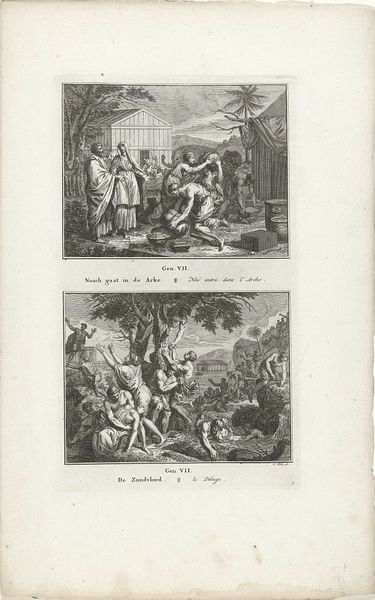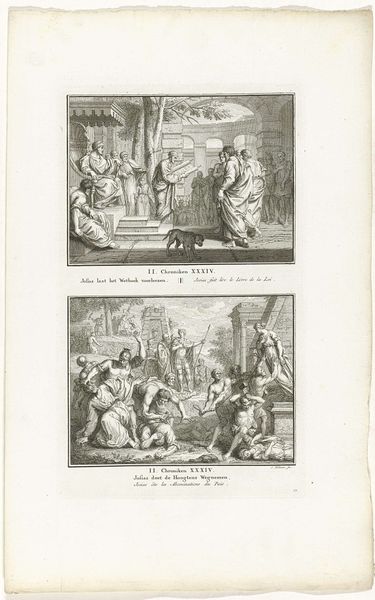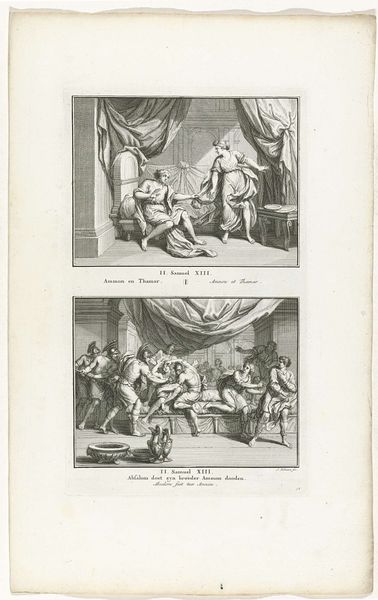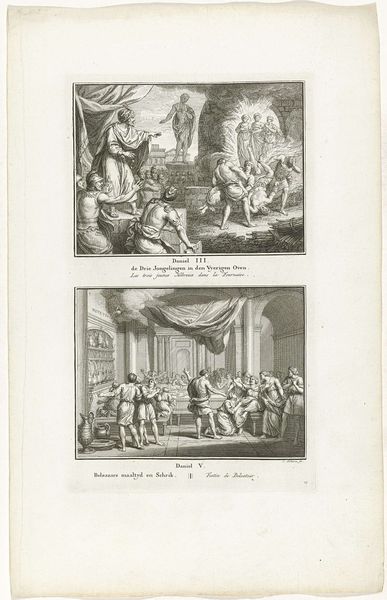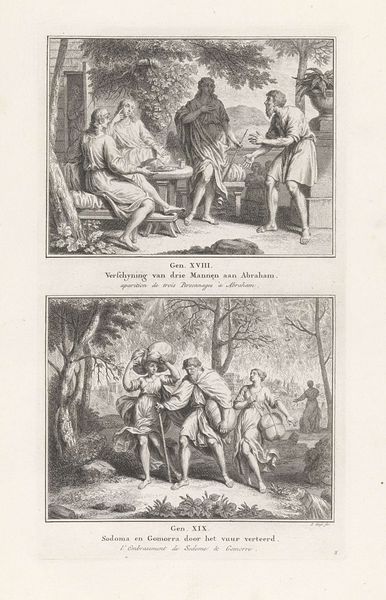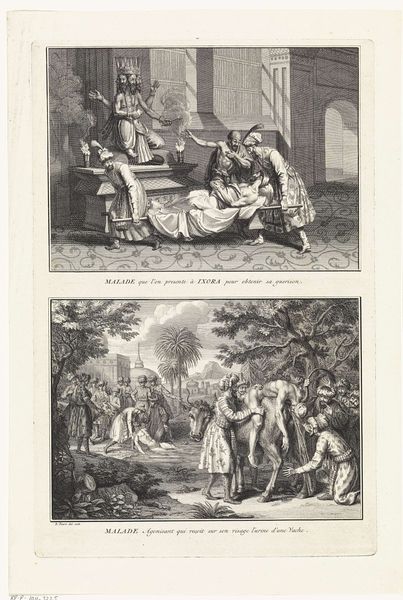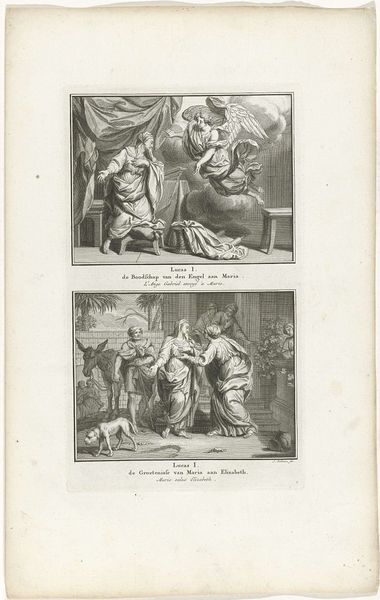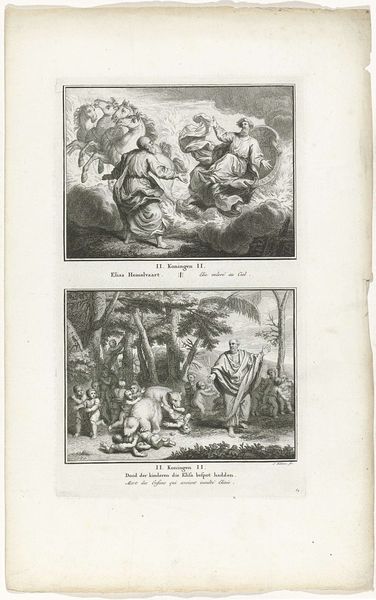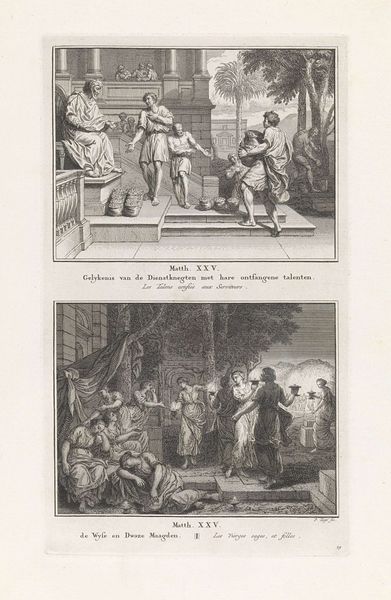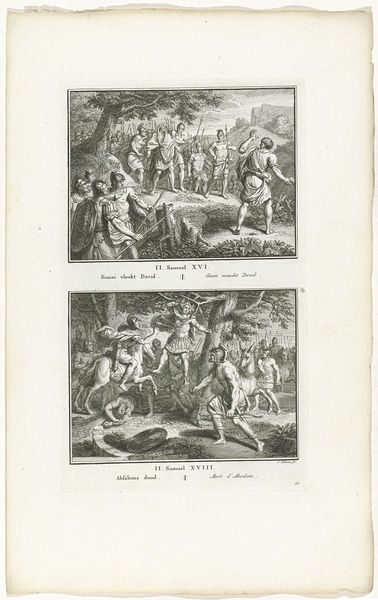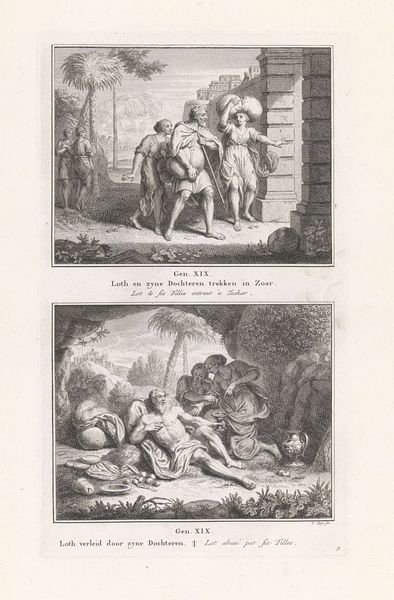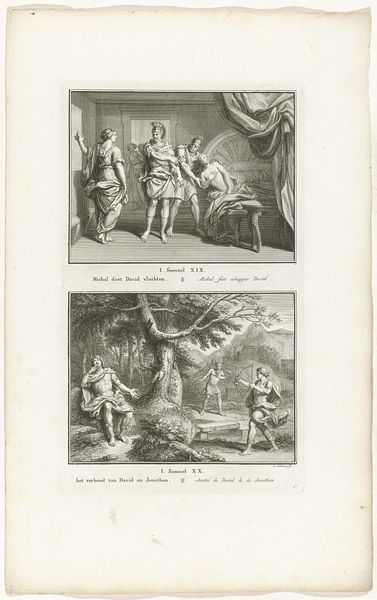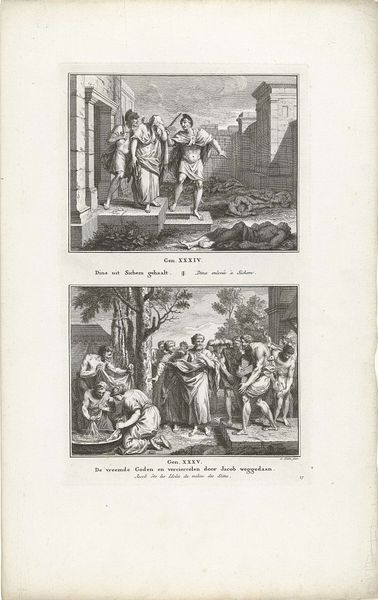
Dimensions: height 323 mm, width 191 mm
Copyright: Rijks Museum: Open Domain
Curator: Here we have a print dating to 1791 by Simon Fokke, currently held at the Rijksmuseum, which presents two scenes from the Book of Genesis: "The Sacrifice of Noah" and "Noah Mocked by Ham". It’s rendered as a rather crisp line engraving. Editor: It's fascinating how these two scenes are visually tethered. At first glance, the image strikes me with its stark contrast in human emotion and experience—religious solemnity gives way to intoxicated vulnerability. Curator: Yes, and each image tells a story loaded with cultural and psychological depth. The top scene displays Noah’s gratitude and re-establishment of order, presenting sacrifice after the deluge as the beginning of civilization’s next chapter. What symbols do you see contributing to this idea of restoration? Editor: I'm struck by how the vertical lines—the altar, the reaching figures, even the implied column of smoke—create a sense of aspiration and hope. Then, juxtapose that with the heavy, almost claustrophobic, drapery of the lower image... Curator: Precisely, which visualizes the breakdown of respect within the familial order. Ham's mockery represents an interruption, or even a desecration, of ancestral values, of what came before. In iconography, clothes, or their absence, tell stories about revelation and shame. Editor: So the exposure is itself symbolic—an undoing of societal norms! Beyond that, though, Fokke's strategic use of light and shadow emphasizes the vulnerability and indignity of Noah’s situation. This almost theatrical lighting directs the viewer’s gaze precisely where the power dynamic is most degraded. Curator: I agree, and in this degradation, Fokke presents a universal narrative. Consider how such images reinforced, and continue to shape, patriarchal cultural norms by teaching people about respect, authority, and inherited morality. These biblical scenes resonated, making abstract lessons quite immediate and deeply internalized. Editor: Yes. For me, the aesthetic execution draws my attention to a powerful use of art to create social cohesion. Though I wonder about contemporary receptions—whether an ironic reading of power dynamics is now more prevalent than reverential acceptance of religious allegory. Curator: I appreciate your formalism directing us to such critical awareness. Thinking about semiotics and composition definitely adds dimension to its contextual import. Editor: Agreed! Analyzing the interplay between line and narrative offers new portals into this relatively simple print, demonstrating that cultural values are conveyed as much through form as they are through overt content.
Comments
No comments
Be the first to comment and join the conversation on the ultimate creative platform.
